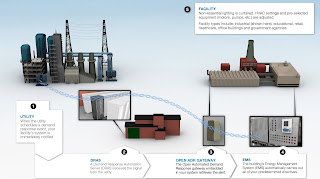HVAC TECH
Building Management System
Today, it is quite difficult to manually control a building's equipment, utilities, power, lighting and other energy resources without a reliable and effective control system that ensures the comfort and safety of the people who live and work in the building. Moreover, it is difficult to maintain the equipment and utilities and optimize the resources used. For this reason, building management systems are used to control all systems and energy efficiently and effectively.
What is Building Management System?
A Building Management System is a system for controlling, managing and monitoring devices such as: air conditioning system, lighting system, heating system, ventilation, power supply, door locks, etc.
A Building Management System is a computer-based system that is installed in a building. Building Management System hardware and software were originally developed in the 1960s. Over the years, the IT infrastructure for Building Management Systems has grown organically and many improvements have been made in control, communication, protocols, networking, etc. In today's fast-changing world, Building Management Systems contain mostly incompatible devices and infrastructure.
Nowadays, all commercial buildings are controlled by a Building Management System (BMS) to reduce energy losses and improve control of the systems.
Below are the components and parameter which controlled by Building Management System:-
System for managing heat consumption
System for controlling water supply and pumping system
Temperature Control valve of Air conditioning systems
On-off control for air conditioning system
Controlling Building lightning system
It control smoke detectors and fire hydrants alarm system
Fire alarm system, fire and other emergency warnings system
Building Doors interlocks system
BMS also control the volume control valve of air conditioning system
Advantages of Building Management System:-
The main advantage of BMS is becoming energy efficient by controlling and minimizing energy uses and the waste of energy
Improves the quality of our system and make easier to control
Provide security to our business or Building
Improve the indoor environment safety and quality of our HVAC system
Reduces the our equipment operating cost
Reduces the resources of natural environments
HVAC TECH
https://hvactech.in


Comments
Post a Comment